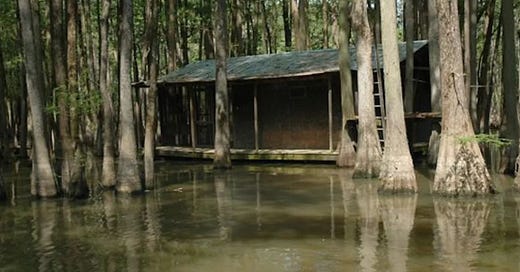How North Carolina became the founding homeland of white trash
This is the second part of my thoughts on White Trash: The 400-Year Untold History of Class in America by Nancy Isenberg.
Now, I have a rich personal history with North Carolina and have often said it’s a near-perfect state, with mountains on one side, beaches and the ocean on the other, and an intellectual colony in the middle.
Of course, I never said it wasn’t richly populated with characters aplenty. And author Nancy Isenberg writes in her essential history book that North Carolina was the first homeland of white trash in the new America.
The reasons for this date all the way back to 1712, when Carolina was divided into two colonies, with some of the reasons including “the difficult terrain that spanned the border with Virginia, plus the high number of poor squatters and inherently unstable government,” Isenberg notes.
South Carolina developed into an extreme class system, with 72 percent of the population being slaves by 1740. Since the white population was not growing at the rates leaders desired, a series of laws directed that for every six black slaves owned, a white slave was required.
North Carolina became something else, “wedged between proud Virginians and upstart South Carolinians,” it became “a frontier wasteland” and “swampy refuge for the poor and landless.”
Along the state’s border with Virginia was the Great Dismal Swamp, which divided “civilized Virginia planters from the rascally barbarians of Carolina.” (Quite a bit later, George Washington established a company, in 1763, “to use slaves to drain the swamp, grow hemp, and cut wood shingles.”)
The Carolina coastline was also seen as not desirable, believe it or not, as few boats “could navigate the shallow, shoal-filled inlets of the Outer Banks.” Smuggling was a good way to make a career though, since many of the state’s inlets were hidden. Edward Teach, known as Blackbeard, was one of many pirates who cut deals with local politicians in order to operate. It worked out for him until he got his head chopped off while fighting Virginians in 1718.
When William Byrd II was commissioned by Virginia to lead a surveying expedition to North Carolina in 1728. After he spent months navigating across the Dismal Swamp, he found the Carolinians “resistant to religion and reform. The men slept and snored through most of the morning. In waking, they sat smoking their pipes. The little work that actually got done was performed by the female poor.”
Byrd reported on his observations of one man with a wife and six children living in a home with no roof - like “a cattle pen.” The surveyor noted that many of the other people he witnessed seemed to grunt rather than speak, “spent their days foraging and fornicating,” and even displayed signs of cannibalism.
Many others had similar observations of the time in Carolina. Most had no idea what their immediate areas were called, didn’t know directions to other places, stared blankly at travelers, had visible and open sores, horrible complexions, poor diets, missing limbs and teeth, and wore dirty cotton rags.
It may be hard to tell how much of this was simple bias. A disgust of idleness was deeply ingrained in the English, and it was a lot of their reporting upon these early times of European colonists in North Carolina that informed - and continues to inform to this day - our feelings about white trash and class throughout the U.S.
“The rural poor,” Isenberg writes, “though seen as a liability, became an unabashed part of the American experience.”





